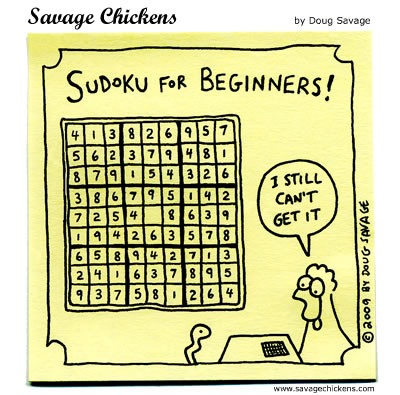Y'all be full of it, I sez.
Well, yes and no. The fact is that the (known) proofs of most useful patterns starting with pointing pairs and on up require "
what any reasonable person would consider a guess"
at some level. So, in one sense, if a particular sudoku puzzle requires* pointing pairs, and its the solver's first time doing a sudoku puzzle, then they are likely to see that as a guess. If you've solved plenty of sudokus and see pointing pairs in your sleep, they cease to be guessing, and start being pattern-matching. Guessing is, in some sense, inherently an empirical rather than theoretical concept. It's in the eye of the solver.
* "
requires pointing pairs"
here is not meant to be a theoretical requirement either, but more of a practical requirement. Sure, you can usually use some other technique, but my conclusion should apply to that technique as well.
Now, I said earlier that the best (current) solvers (both human and computer) would have to guess on this puzzle. I feel confident in that assertion because the technology and abilities of these solvers, over time, has started to converge to a consensus on what a human can reasonably handle without guessing, and scanraid handles that (and more) before it starts to guess. This is not a theoretical definition of when a guess is required, of course, but I think that its less subjective than anything else you can come up with. Will smarter humans in the future be able to solve this puzzle without guessing. Maybe, but I doubt it.
As for your methods, I strongly suspect (though I can't prove) that anything you are doing, short of guessing, is a subset of a technique called
The Sledgehammer Technique which was developed by one of the top LP solvers in the world, Wei Hwa.
____________________________
Progress Quest Progress








